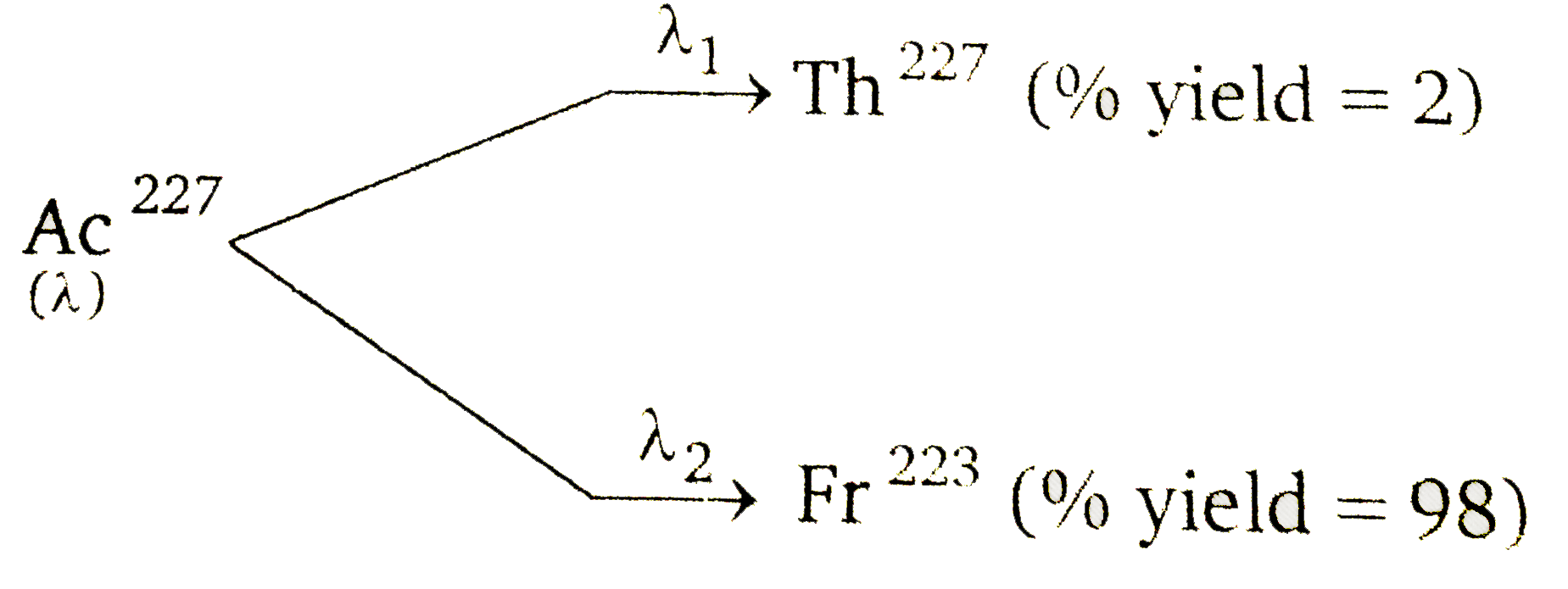Complete Solutions to Level 1 (Q.123 To Q.150) of chapter CHEMICAL KINETIC & NUCLEAR CHEMISTRY of Class 12 book with complete answers and questions
| Class 12 | CHEMISTRY |
| Chapter | CHEMICAL KINETIC & NUCLEAR CHEMISTRY |
| NARENDRA AWASTHI | Level 1 (Q.123 To Q.150) |
| Number Of Questions | 10 |
| Academic Year | 2023-24 |
Activity of a radioactive substance is `R_(t)` at time `t_(1)` and `R_(2)` at time `t_(2)(t_(2)gtt_(1))`. Then the ratio `(R_(2))/(R_(1))` is
View SolutionThe half-life of `._(6)^(14)C` is 5730 year. What fraction of its original `C^(14)` would left after 22920 year of storage?
View SolutionThe amount of `._(6)^(14)C` isotope in a piece of wood is found to one fourth (1/4) of that present in a fresh piece of wood. Calculate the age of the piece of wood `(t_(12) "of "_(6)^(14)C=5770 "years")`
View SolutionA radioactive element undergoing decay is left 20% of its initial weight after certain period of time t. How many such periods should elapse from the start for the 50% of the element to be left over?
View SolutionIn a sample of wood, the reading of a counter is 32 dpm and in a fresh sample of tree it is 122dpm . Due to error counter gives the reading 2 dpm in absence of `.^(14)C` . Half life of `.^(14)C` is 5770 years .
The approximate age (in years) of wood sample is :
View SolutionA certain radioactive isotope `._(Z)^(A)X(t_(1//2)=100` days decays to `._(Z-2)^(A-8)Y` . If 1 mole of `._(Z)^(A)X` is kept in sealed container , how much He gas will accumulate at STP in 200 days?
View SolutionTwo radio isotopes A and B of atomic mass X and Y are mixed in equal amount by mass. After 20 days , their mass ratio is found to be `1:4`. Isotope A has a half-life of 1 day. The half-life of isotope B is :
View SolutionThere are two radio nuclei A and B is a `alpha` -emitter and B is `beta`-emitter. Their disintegration constant are in the ratio of 1:2 . What should be the number of atoms ratio of A and B at time t=0 , so that initially probability of getting of `alpha` and `beta`-particles are same.
View Solution`Ac^(227)` has a half-life of 22 years . The decays follows two parallel paths

What are the decay constant `(lambda)` for Th and Fr respectively ?
View Solution`._(84)^(218)Po(t_(1//2)=183` sec) decay to `._(82)Pb(t_(1//2)=161` sec) by `alpha`-emission, while `Pb^(214)` is a `beta`-emitter. In an experiment starting with 1 mole of pure `Po^(218)`, how many time would be required for the number of nuclei of `._(82)^(214)Pb` to reach maximum ?
View Solution
Level 1 (Q.123 To Q.150) questions and complete solutions for chapter CHEMICAL KINETIC & NUCLEAR CHEMISTRY of NARENDRA AWASTHI of Class 12
All Exercises from NARENDRA AWASTHI Class 12 CHEMISTRY CHEMICAL KINETIC & NUCLEAR CHEMISTRY
- Exercise
- Level 1 (Q.123 To Q.150)
- Level 1 (Q.3 To Q.32)
- Level 1 (Q.33 To Q.62)
- Level 1 (Q.63 To Q.92)
- Level 1 (Q.93 To Q.122)
- Level 2
- Level 2 (Q.3 To Q.32)
- Level 2 (Q.33 To Q.35)
- Level 3 - Assertion - Reason Type Questions
- Level 3 - One Or More Answers Are Correct
- Level 3 - Passage
- Level 3 - Subjective Problems